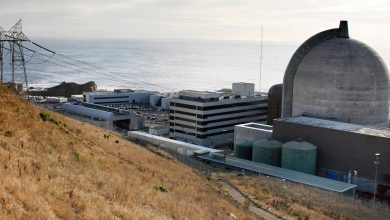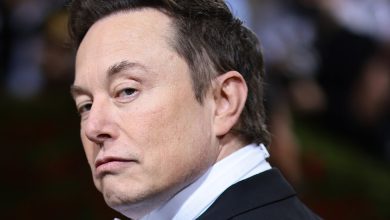Inside the Implosion of CNN+

David Zaslav had been chief executive of Warner Bros. Discovery for all of a few hours when he learned he had a problem.
On April 11, the day his newly merged company began trading on Nasdaq, Mr. Zaslav greeted New York employees with pasta and ice cream bars, delivering an impromptu rallying cry to his new charges. He was on his way to Washington, next stop on the coronation tour, when a call came in.
His team had just gotten its first look at data from CNN+, the much-promoted subscription streaming service started two weeks before, and the news was grim. Fewer than 10,000 viewers were watching at any given time, despite a multimillion dollar ad campaign and big hires like Chris Wallace. They were recommending a cold-eyed review.
Three days later, shortly after Mr. Zaslav appeared with Oprah Winfrey for a rah-rah company town hall, he gathered his deputies inside a low-slung stucco building in Burbank, Calif., on the Warner Bros. studio lot, and said he agreed with their conclusion: shut it down.
The near-instant collapse of CNN+ amounted to one of the most spectacular media failures in years, a $300 million experiment that ended abruptly with layoffs in the offing and careers in disarray. The corporate tug of war over its fate exposed deep philosophical divides about the future of digital media, as executives struggle to navigate a rapidly changing marketplace where technology and consumer habits shift day to day.
And it reflected the awkward regulatory dance of two media giants merging even as a high-profile project hurtled toward completion. Discovery had some concerns about CNN+, but was constrained from directly guiding one of its streaming competitors until the deal closed.
CNN must now emerge from one of the most chaotic periods in its history: the firing of its top-rated anchor Chris Cuomo; the ouster of its longtime president Jeff Zucker over an affair with a colleague; and the absorption of its parent company WarnerMedia by Mr. Zaslav’s Discovery.
The collateral damage has included the long friendship between Mr. Zaslav and Mr. Zucker, one-time allies in business and in life. Mr. Zucker, who once called the Discovery chief “the best friend that anyone could ever want, and I’m lucky that he’s mine,” has not spoken with Mr. Zaslav since his exit on Feb. 2.
Inside CNN, employees remain stunned. “This is not easy news, and I don’t want to minimize that,” Chris Licht, the network’s new chairman, told CNN+ staff in a solemn call announcing the shutdown. “I am proud of it,” he added. “I am proud of this team, and I am gutted by what this means for you.”
This account is based on interviews with a dozen people intimately familiar with the rise and sudden fall of the streaming service. They spoke on condition of anonymity to share the details of sensitive conversations.
CNN+ was introduced to the world on March 28, a day before its debut, with a splashy party on the 101st floor of 30 Hudson Yards, the futuristic Manhattan skyscraper that houses CNN. Network stars posed for pictures by a giant fiberglass sculpture of the CNN+ logo, New York City sprawled beneath their feet.
But inside the network, the service was missing its most prominent champion.
Mr. Zucker, the biggest advocate for CNN+, was out. Jason Kilar, the chief executive of WarnerMedia, was a streaming evangelist; he led a toast at the CNN+ party, but it was among his last public appearances before leaving the company a week later. Left to defend the platform internally was its in-house guru, Andrew Morse, CNN’s chief digital officer, who previously ran Bloomberg Television.
Understand the Turmoil at CNN
- A New Behemoth: WarnerMedia, CNN’s parent company, closed a deal to merge with Discovery Inc. in one of the nation’s largest media acquisitions.
- CNN+: Following the merger, Warner Bros. Discovery decided to shut down CNN’s streaming service, about a month after its splashy debut.
- Chris Cuomo: The star anchor was fired for trying to help his brother, Andrew Cuomo fight off a sexual harassment scandal. He is now seeking $125 million from CNN for wrongful termination.
- Jeff Zucker Resigns: The network’s president stepped down after failing to disclose a workplace relationship revealed during the Chris Cuomo inquiry.
- A New Leader: Chris Licht, a veteran television producer who helped create “Morning Joe” at MSNBC, is set to succeed Mr. Zucker.
It was not supposed to go this way.
CNN revealed plans for CNN+ in July 2021, billing it as the network’s most important venture since its founding in 1980. Mr. Zucker called it a bold and necessary foray into subscription-based digital news at a time when consumers were abandoning traditional cable television. Hundreds of new employees would be brought on to produce eight to 12 hours of live programming a day.
Crucially, AT&T — which at the time controlled WarnerMedia and CNN — was onboard.
AT&T had already agreed to spin off WarnerMedia to Discovery and leave the entertainment and news business. But in June 2021, leaders at the telecom giant met with Mr. Zucker in Dallas and approved a $1 billion budget over four years for CNN+.
Mr. Zucker went on a hiring spree, enticing stars like Eva Longoria, who signed on for a Mexico-based travel show, and Audie Cornish, the former NPR star. A March 2022 start date was set.
Then Mr. Zucker abruptly resigned, followed by his top deputy, Allison Gollust, a week later. In addition to not disclosing their relationship, the two were accused of violating the network’s news standards. (Both denied this.)
Mr. Morse, who oversaw all of CNN’s global digital operations, decided to act. In late February, and again in early March, he asked if his team could share their vision for CNN+ with Discovery officials before the merger was complete. He figured that making an early case was the best way to convince Discovery that CNN+ represented the future.
Both times, the requests were not granted. In transactions between major companies, executives are wary of running afoul of rules precluding “gun-jumping”: coordinating their business activities in the critical days before the deals close.
Then came an ominous sign. On March 14, two weeks before CNN+ was to start, Gunnar Wiedenfels, Discovery’s chief financial officer, appeared at a Deutsche Bank conference and declared that Discovery+ and WarnerMedia’s HBO Max would be rolled up into a single giant “blowout” mega platform.
Mr. Wiedenfels did not mention CNN+. After that conference, Mr. Morse asked again if his team could speak with Discovery; for a third time, no such meeting took place.
His concerns were well-founded.
Discovery executives were skeptical of CNN+. Mr. Zaslav and his team had experienced bad luck with single-topic streaming services; their niche platforms dedicated to cars, food and golf were costly and ended in failure.
A cable TV pioneer known in the industry simply as “Zas,” Mr. Zaslav had devised the deal that brought together Discovery and Warner Bros., a late career move that made him one of the most powerful people in media.
Discovery believed in the power of big-tent streaming services, especially given the crowded market. It was also about to assume $55 billion in debt stemming from the merger, and executives needed to find $3 billion in savings.
Despite the skepticism radiating from Discovery, Mr. Kilar — who oversaw Mr. Zucker’s exit and has a reputation as an iconoclast — did not consider scrapping the start of CNN+. He assumed that Discovery had fully understood when it agreed to the merger that WarnerMedia was readying an ambitious new digital CNN product.
Further, Mr. Kilar did not think CNN+ conflicted with Discovery’s “all in one” streaming philosophy. He had already planned to include some CNN+ content with HBO Max, while still offering CNN+ as a stand-alone service.
He forged ahead. “It would be hard to overstate how important this moment is for CNN,” he wrote on Twitter on the day the service started.
Mr. Zaslav and his team were confounded.Discovery was poised to take over the company within weeks. Why not just delay?
Still, aides to Mr. Zaslav admitted one advantage: they would get a look at CNN+ performance, akin to a movie’s opening-night box office. Maybe once they looked under the hood, CNN+ would exceed their low expectations.
Immediately after the merger closed on April 8, Discovery officials began asking for data on CNN+’s progress. They did not like what they saw. In a troubling sign, downloads for the service were waning, despite the big marketing push.
On April 11, as the “WBD” ticker symbol went live on Nasdaq, CNN+ officials met with the new management of Warner Bros. Discovery and made their case, an opportunity they had been asking for since February.
Mr. Morse said that CNN+ had secured 150,000 paying subscribers in its first two weeks and was on target to hit its first-year goals. He argued that consumers were willing to pay for high-quality digital news (CNN+ cost $6 a month), citing the success of The New York Times.
Mr. Zaslav’s representatives — which included Mr. Licht, the new CNN chairman, and JB Perrette, Discovery’s longtime head of streaming — were unconvinced. They said they were suspending external marketing for CNN+ for two weeks pending a formal review.
The next day, some unflattering statistics were reported by CNBC and Axios. CNN executives were dismayed. And they grew suspicious of their new superiors from Discovery, believing they had leaked the data to create a pretext to shut down the service.
Mr. Zaslav, after meetings with CNN employees in Washington and Atlanta, arrived at the Warner Bros. lot in Burbank on April 14. He recruited Ms. Winfrey, who created her OWN cable network in tandem with Mr. Zaslav and Discovery, to interview him onstage for an introductory town hall with employees.
Later that afternoon, Mr. Zaslav convened his brain trust in a building where Jack Warner, a Hollywood mogul from an earlier era, worked from the 1930s to the 1960s.
They agreed that CNN+ was eating up too many resources, and that its potential as a digital destination could not justify its tiny audience and enormous cost. Mr. Perrette, phoning in from London, said it was time to cease operations. Mr. Zaslav agreed.
Over the next week, the Zaslav team finalized the details. Mr. Licht, along with Adria Alpert Romm, the Warner Bros. Discovery chief people officer, argued that CNN+ employees should receive three months of pay and a chance to remain at the company; anyone laid off would receive an additional six months of severance.
Early on April 21, Mr. Licht broke the news to top CNN officials that the service would end on April 30. Mr. Morse was also not told until that morning. Mr. Licht phoned Mr. Wallace, Ms. Cornish and other top anchors to say CNN would try to find a place for them. The shows hosted by Ms. Cornish and Ms. Longoria had not yet started.
Supporters of CNN+ lamented that the streaming service was not given much of a chance, and argued that the decision was harmful to the CNN brand, a misstep that would leave the network unprepared for a future where few Americans still watch cable TV.
For the rank-and-file, it was a brutal blow. Commiserating over doughnuts, employees were told by Rebecca Kutler, CNN+’s head of programming, that they were not required to come into the office if they did not have a specific responsibility.
Kasie Hunt, who left a MSNBC job for CNN+, ended her final show on Friday with a tribute to her staff. “They left stable jobs, some of them moved across the country, they all took huge risks,” she said. “If you are hiring journalists, they are the best in class.”





